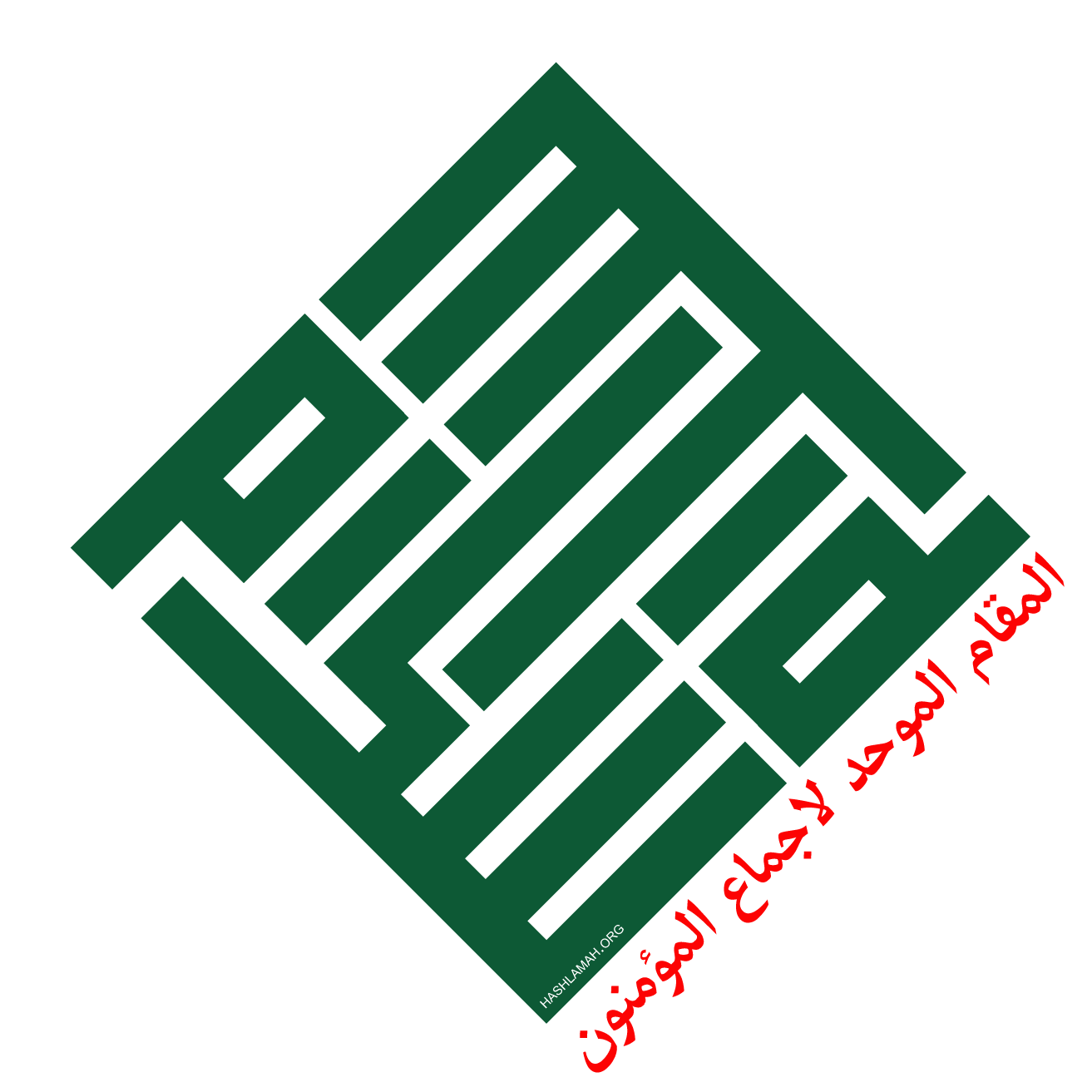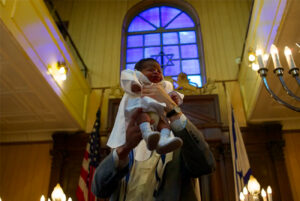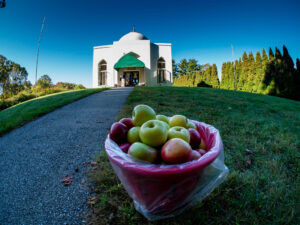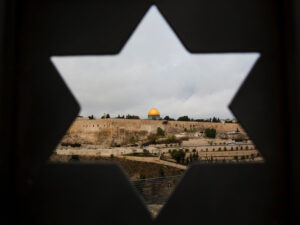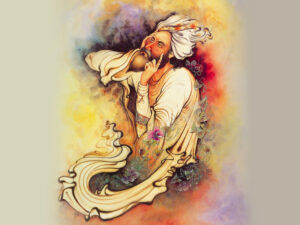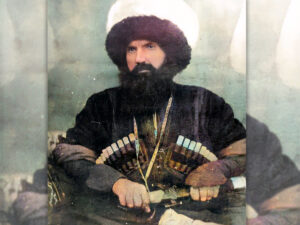Can a Jew pray with a Muslim? Can a Jew pray in a mosque? These are important questions to answer in order to establish the permissibility of Jewish and Muslim circles of dialog and co-worship. Just as important as establishing the permissibility of such things, however, is establishing their precedence. For if such scenarios have never been done before, or have been done with no success, then there is little reason to try such failed options today. If, however, such an approach has been used successfully in the past, then this can serve as a source of hope that peace truly is possible.
In 2011, Rabbi Baruch Efrati famously declared, in a response to a question of whether a Jew could pray in a mosque while traveling, that “It would be better to pray in a mosque and do so with meaning and after the sun rises, rather than at home, at dawn or at the airport and without meaning.”[1] His position, while surprising many in Israel and abroad today, was a very straightforward decision, derived from centuries of halakhic precedence. In terms of Jewish law or halakhah, this decision was not seen as controversial in the least amongst the majority of rabbis. We see similar modern rulings that invoke the historical halakhic precedence permitting Jewish and Muslim co-worship, including in the case of the East Bronx Chabad Orthodox Jewish congregation which took up services in a welcoming Masjid al-Iman Islamic Cultural Center of North America, after funding for their synagogue ran out.[2] Today, as well, the Cave of Machpelah in Hebron – the burial site of Abraham and Sarah, Isaac and Rebecca, and Jacob and Leah, and in Midrashic accounts, also the burial site of Adam and Eve – is a mosque where Jews and Muslims alike pray and have prayed throughout the centuries.
In the Geonic period, there were some otherwise great sages who had numerous misconceptions about Islam and the practices of Muslims, based entirely upon hearsay, largely from Christian slander of Muslims. A famous example is Rabbi Sa`adyah Gaon (882/892 – 942), who seemed to disbelieve Muslims, when they rejected the Christian allegation that idols were kept in the Ka`bah towards which Muslims prostrate.[3] This incorrect belief of Rabbi Sa`adya was rejected, denounced and halakhically squashed by Maimonides, the Rambam (1135 – 1204), as we will soon see.
Ultimately, the question of whether Jews can pray with Muslims or worship in a mosque all comes down to whether a mosque is a place of idolatry or not. If, as will be demonstrated beyond any semblance of doubt, the mosque is a place of monotheistic worship, a Jew may pray there side-by-side with Muslim worshippers. We will find, from the primary sources, that not only did the Rambam rule that mosques are places of pure monotheism, but that Muslims have absolutely no error in their views of the Oneness of the Divine. We will furthermore see that Muslim contemporaries of the Rambam, one of the greatest rabbis of all time, claim that he willingly, under no compulsion went to mosques to worship late in his life, even while he was under the employ of Saladin, while it was a well-known fact to his Muslim employer and others that he was Jewish.
The result of the Rambam’s rulings was virtually a Jewish consensus that Jews may pray with Muslims and may do so in a mosque if so desired. This text will further outline the basic halakhic reasons and authorities who have maintained not only that Jews may pray with Muslims, but may do so in Mosques and that Muslims may reside in Eretz Yisrael as “Noachid” Gerei Toshav. This latter topic is addressed in much greater detail, both in terms of Halakhah and in argumentation, in volume 1 of the Hashlamah Project work Blueprints For the Messianic Era. The interested reader is referred to it for further study.
Islam as Pure Monotheism from a Jewish Perspective
The Rambam makes it clear that Muslims are not idolaters, in spite of the fact that some Jews in his day, and Sa`adya before him, mistakenly thought otherwise. This is interpreted by way of his Mishnah Torah, in its ruling against Christianity as idolatry, but accepting non-Christian monotheistic “Noachidism” of various forms.[4] In addition to his Mishneh Torah, his well-known responsum to `Ovadyah the Proselyte more directly comments on the subject.
The Ishmaelites [Muslims] are not idol worshippers at all, and it [idolatry] has ceased to exist in their mouths and hearts and they attribute the proper Oneness to God with no blemish. And if someone will say that the house they worship in is an idolatrous shrine . . . as their ancestors worshiped idols there—that does not matter. Those who bow towards it today, their hearts are dedicated to heaven [towards the One God] . . . and the Ishmaelites today, all of them, women and children, have ceased to believe in idolatry and their mistake is . . . in other things . . . however in attributing Oneness to God—they have no mistake at all.[5]
The Rambam not only defends Islam as pure monotheism consistent with the Jewish view of the Oneness of God, but he also defends the rituals of the Islamic Hajj (Hebrew: Chag) as having absolutely no polytheistic origins, as it had been popular in the West to assert (a lie which continues today in Christian anti-Islamic polemic). We read in the same responsum to `Ovadyah, that “concerning the Ishmaelites whom you said are not idolaters,” which Maimonides agreed, “your teacher told you that they are and that the stones they throw during Hajj are intended for Mercurius,” the Greek deity of trade, merchants, and travel, he “thereby answered you improperly so that you were grieved and humiliated, and he proclaimed ‘Answer a fool according to his folly’ (Proverbs 26.5)… Should someone [like you] who has attained this station be called a fool? Far be it from you! The Lord has called you not a fool (kesil) but rather wise (maskil), discerning and righteous, the disciple of Abraham our father!”
Centuries later, the Rama (1520 – 1572) also confirmed the ruling that Muslims are not idolaters in his Responsa Melamed Le’hoil.[6] Rabbi Yosef Karo, author of the Shulchan Arukh code of law, himself bases his view that Muslims are not idolaters or polytheists on the Rambam himself, and ever since there has been practical consensus on the matter.[7][8] Even Rabbi `Ovadyah Yosef, a controversial figure and spiritual head of the Shas party in Israel – more popular amongst S’fardim for its defense of their social rights than for its hardline stance against Palestinians, who has gone so far as to call for the ethnic cleansing of Palestinians – has stated clearly that early Geonim who referred to Ishmaelites as idolaters were “refer[ring] to Ishmaelites in previous generations that were idol worshippers, as Maimonides observes that, in those days, they had three kinds of idolatry, but in later generations,” after Muhammad brought them the message of the Qur’an, “they reached the correct conclusion of the Oneness of God.”
This is also the opinion of Rabbi Kook, the first Chief Rabbi of Eretz Yisrael, in Responsia Mishpat Kohen 69. There is a general prohibition against entering a shrine of idolatry. The origin of this prohibition is famously found in the Mishnah `Avodah Zarah 1.4. As outlined and cited throughout the Hashlamah Project work Blueprints for the Messianic Era, Muslims fit the Talmudic criteria for Gerei Toshav. This opinion was in fact confirmed by Rav Kook, who concluded point-blank that the Arabs are to be considered as “resident settlers” (germ toshavim) and portions of the Land of Israel could be sold to them, and they are furthermore permitted to reside on property they already lived on in Eretz Yisrael. This, he explained, is proven by “the fact that the Ishmaelites, that are not idol worshippers, are not included in the prohibition of ‘Lo Techonem.’”[9] This ruling, allowing the selling of plots of land in Eretz Yisrael during the shmtita, is held to this day by the Chief Rabbinate of The State of Israel.[10]
Naturally, by declaring Muslims not only to not be idolaters but also to have the “correct” Jewish view of God, Maimonides was declaring mosques kosher places for a Jew to worship. A Muslim historian, Ibn al-Qifti (1172-1248) reports nothing less than that the Rambam himself, on numerous occasions, voluntarily went to mosques to pray, under no compulsion and seeing no contradiction with his Judaism. Ibn al-Qifti notes that this was towards the end of Maimonides’ life and was not an event of his youth, under fear of the Al-Mohades who had invaded Al-Andalus in his youth.[11] Kenneth Seeskin writes, in The Cambridge Companion to Maimonides, “although Ibn al-Qifti’s book has come down to us in a later recension, and contains some errors, we have no reason to doubt the information on Maimonides.”[12]
Medieval Jewish Attitudes and Relationships to Sufism
Shlomo Dov Goitein explains that “the contacts between Jews and Sufis were not confined to literature. Many biographies of Sufi masters state that their mystical sessions were attended by non-Muslims.” That this included a majority of non-Muslim Jews was reported by al-Qushairi (d. 1074) and even as late as 1565 by Sha’rani.
This and other accounts from both Jewish and Muslim sources are corroborated today by the finds of the Cairo Genizah, maintained in the Taylor-Schechter Collection of the Cambridge Library. In a letter which Goitein concludes was addressed to the Nagid of the Egyptian Jewish community, David II Maimonides, the great, great grandson of Maimonides (David bin Yeshu`a bin Avraham bin David bin Avraham bin Rambam)[14] during the years of his tenure in 1355-1367.[13] Judeo-Arabic and Judeo-Sufi literature scholar Paul Fenton summarizes Nagid David’s career:
Born in Egypt about 1335, David succeeded his father Joshua Nagid of the Egyptian community in 1355, being the last of the Maimonidean dynasty to have held this office, which had been traditionally occupied by the family for over 200 years. For some unknown motive he forsook the Egyptian shores and took up residence in Syria for a number of years (ca. 1375-1386), in the cities of Aleppo and Damascus. During this period he continued, however, to be known and revered as “David ha-Nagid, head of the Yeshibah.”
The account in the Genizah letter tells of Jews attending the meditation and zhikr (Heb: hazkarah) retreats of Sufi Shaykh Al-Qurani, who Fenton deduces could only refer to Yusuf al-`Ajami al-Qurani (d. 1367), who supervised a zawiya hermitage on the Qarafa as-sugra Muslim cemetery east of Cairo. Al-Qurani was well known, and many Muslims flocked to his zawiya to learn from the fuqara Sufis there. True to the idiosyncrasies for which Sufi masters were known, Al-Qurani refused to admit any visitors who did not bring monetary gifts or other gifts of material worth. Chided as materialism by non-Sufis, Al-Qurani explained “the dearest thing the fuqara have is their time, whereas money is the dearest thing to worldly people; we can spend our time for them, only if they spend their money for us.”
Such a bold statement would certainly categorize Al-Qurani as one of the more eccentric of Sufi shuyukh (singular: shaykh) apparently unconcerned for how those who had not devoted themselves to a life of pietism viewed him or his order. The Cairo Genizah documents not only the presence of practicing Jews amongst these Sufis, but in this letter to Nagid David Maimuni, we find that one Basir, a Judeo-Sufi “Chassid,” as the Judeo-Sufis were titled, before the term came into modern parlance, had neglected his wife and three small children, and even intended to take up permanent residence at the hermitage.
It was against this backdrop that the letter is set, when Basir’s wife wrote to urge Nagid David to “go after” him (1.15) and bring him back to fulfill his duties as a spouse and parent. What is more noteworthy is that the participation of Jews with Muslim Sufis and vice versa was widely attested, and not even seen as strange enough to expand on in the letter – Basir’s wife needs give no background to the phenomenon, nor explain how her husband was attracted to the order.
We can conclude that Nagid David did not challenge Basir for such activity, but instead for going to extremes and neglecting his family. His wife insightfully notes that while tatawwu (1.4) pietistic devotions, meditation, zhikr (hazkarah), etc. that the Sufis engaged in were laudable, it was only the zahir (exoteric appearance), a term which the Rambam interprets as the Hebrew “p’shat” in his various responsa, and not the batin (esoteric inner) if one had neglected their fundamental duties as a husband, father and Jew (1.7-8; 1.1-2).
This is quite significant, as the term tatawwu’ in late Arabic usage, such as the phrasing we find in the famous work Arabian Nights, means “leading the life of a Sufi.” Fenton gives numerous examples of phrasing in Arabic where forms of this word are always rendered as corresponding to Sufism. Basir’s wife then was not simply using a generic term, but was implying that tasawwuf itself was laudable, so long as one maintained their duties. While his wife was worried that he would be converted to Islam and thereby desist from studying Torah and pull their children out of their local Jewish religious school, this is the extent of her concern, but with Sufism itself, she is only concerned with the neglect towards her and her family. She notes that Basir had not left Judaism, and that his participation in the Sufi order did not indicate the conversion which she feared (1.11-12).
While her own views were neither inherently favorable nor negative towards tasawwuf in general, we know a great deal more about the views on Sufism by the authority to whom she was writing. The Maimonidean dynasty, beginning with Avraham ben Rambam, was well-known for having Sufi leanings, and for defending common practices of Sufism amongst their Jewish communities, even reintroducing Salah (Heb: Selah) prayer postures for Jewish worship, and claiming that the Sufis were walking in the footsteps of the prophets of Israel.[15]
Nagid David’s views on Sufism are well attested by his own writings. Paul Fenton writes, in “The Literary Legacy of David ben Joshua, Last of the Maimonidean Nagidim”[16] that David “continued to maintain an interest in Islamic doctrine through direct contact with Muslims.”[17] Furthermore, Franz Rosenthal devoted a considerable amount of research to one particular work out of a voluminous library of writings which he was unable to identify the authorship of, the Murshid ila al-Tafarrud, (Guide to Detachment),[18] “the very title of which,” Fenton explains “clearly betrays the Sufi sympathies of its author.”[19] Though Rosenthal was unable to determine the author of the work, Fenton concludes that it was, without a doubt, none other than Nagid David himself.
Having made a study of the Jewish Sufi movement that had arisen in 13th century Egypt, we conceived that the writer of the Murshid was ideologically tributary to this pietistic current and consequently was of an earlier date than that surmised by Rosenthal… A thorough investigation of these works and of the manuscripts extant in the Bodleian and other libraries led us to the conclusion that the author of this voluminous literary legacy was none other than David ben Joshua Maimonides (active circa 1335-1410), who, judging from the relatively high number of manuscripts of his works preserved, seems to have enjoyed a widespread celebrity in the 15th-16th centuries.[20]
This large number of manuscripts includes some of the works which Fenton demonstrates authorship of Nagid David, such as Tajrid al-haqa’iqal-nazariyyah wa-talkhis al-maqasid al-nafsaniyyah, (Abstract of speculative truths and extract of ethical aims). This, he explains, “draws on a host of Jewish and Islamic sources, of which the most significant are Maimonides and Ibn Sina as well as certain Qabbalistic and Sufi authorities.”[21]
Nagid David’s commentary on his great great grandfather Maimonides’ Mishneh Torah is written in Judeo-Arabic, “in the handwriting of David II Maimonides,” himself and cites “the author’s other words,” making the authorship unmistakable. “The commentary is preceded by two laudatory poems in honour of Ibn Sina and another celebrating the virtues of Awhad al-Zaman (al-Baghdadi).”[22] Similarly, Fenton surmises that Nagid David’s Maqalat fi derek ha’Chasidut, “was a pietistic manual describing, in terms inspired by Sufi doctrine, the spiritual itinerary of the devotee which culminates in prophetical gnosis.”[23] Nagid David’s Al-Murshid ila al-Tafarrud wa-l-Murfid ila al-Tajarrud, as well, is an “ethical manual” which guides the individual “Chassid” through “spiritual stations to the exalted plane of Chasidut.” This work, Fenton explains, is “thoroughly imbued with Sufi ideology and terminology.”[24]
Nagid David wrote numerous other manuscripts, which are beyond the scope of relevance to this discussion except for one. A. Borisov “rightly identified” according to Fenton[25] the work Maqalat al-Wudhuh fi ma`na (Treatise on the Soul and Spirit) as a copy of Rabbeinu Bachya ibn Paqudah’s (or, in this case, “Pseudo Bachya”) Kitab Ma`ani al-Nafs. The connection with Rabbeinu Bachya further solidifies Nagid David’s strong Sufi roots. As we have seen in the work Ba?ya ibn Paq?da and the Origins of Medieval Judeo-??f?sm (available from the Hashlamah Project), Rabbeinu Bachya’s Al-Hidayat ilaa al-Fara’id al-Qulub, translated by Ibn Tibbon into the Hebrew “Chovot Ha’Levavot,” not only refers to Muhammad and `Ali by the designation “Chassid” but also quotes well-known ahadith narrations attributed to each and places them on equal footing to his presentation of Talmudic proofs. The devotion of Nagid David to a work attributed to Rabbeinu Bachya cannot then be overlooked as insignificant, when taken together with the Sufi leanings of his other works, mentioned above. Moreover, the author of this particular work seems to interpolate Bachya’s words with those of both the Rambam and his son Rabbeinu Avraham, whose own favorable attitudes towards Sufism we have already discussed.[26]
Finally, we see amongst the vast library of works attribute to Nagid David, that the work of Ibn al-`Arif (1088 – 1141) is cited as part of the collection of his writings and copyings – a work Fenton describes as ”quite popular among Jews” in general, noting it is found in numerous copies amongst the Cairo Genizah. In addition to his works, numerous copies were found from the famous Sufi Al-Hallaj (c. 858 – 922), who was crucified by the Abbasid Caliphate, against which the Jewish-Proto-Sufi syncretic `Issuniyim (Arabic: `Isawiyah) rebelled (see Revaluating and Interpreting the Sources on the `Isawiyah Jews (`Issuniyim) for more information).
Amongst the various writings and copyings of Nagid David, Fenton notes an important “definition of Sufism” – in relation to copies of Al-Suhrawardi – as being equated in transcription with the Hebrew “Chasidut,” a matter which there is nothing short of consensus on in scholarship on Medieval Judeo-Sufi texts; “Chassid” was used by the Judeo-Sufis as the Hebrew equivalent for “Sufi” both in hadith references and in terms of self-designation.[27] Fenton notes further that “the epithet chassid is not a mere token of piety but also designates a person who follows the ethical doctrines of the Jewish Sufis.”[28] To this end, it deserves to be repeated, that this was the same term used by Rabbeinu Bachya for Muhammad and `Ali. We can conclude then that their very “Chassidut” was seen as within Judaic parameters, lest we should not expect the term to have been applied to them and not indeed to every later Sufi. Fenton concludes that “Maimonides’ descendants were active proponents of this form of pietism for at least two generations, since the Jewish Sufi movement drew its spiritual and literary inspiration from the Sufi orientated writings of Abraham (1186-1237) and his son Obadiah Maimonides (1228-1265),” as we have seen previously in this work and others.[29]
With this in mind, there can be absolutely no doubt, that from a Jewish perspective, it is permissible to pray and engage in other modes of worship and dialog in a shared religious space with Muslims. Finally, we have seen that throughout the career of the Maimonidean dynasty and certainly within the Andalusian community of Rabbeinu Bachya, and the Yemenite Jewish community of the Neo-Platonist Rabbi Natanyel ibn Al-Fayyumi, who like Bachya was greatly influenced by the Muslim “Ikhwan al-Safa” community, that engagement in worship circles was never denounced, nor was it a custom that needed explanation or introduction to the Maimonidean head of Egyptian Jewry, when the topic was mentioned to him.
Just as many popular ideas about race, Jewish identity and questions of “Who is a Jew” are borne more out of non-Jewish concepts originating from Christian and pseudoscientific ideas than from Jewish halakhah and history, so too have the boundaries of Jewish religion been artificially set up in a way unprecedented in Jewish history. Judaism and Islam are not simply two separate religion with no relation to one another, nor two faiths that grew from common Biblical soil. Judaism and Islam have a relationship of one to the other, a relationship that is found in the Torah between Jews and Gerei Toshav, and in the Second Temple Era between Jews and Theosebes, and indeed in Medinah under the leadership of Muhammad between Jews and Muslims as an Ummatan Wahidatan, One Nation.[30] The time has come to return to that precedence, and stand side by side in co-worship, dialog and remembrance of what the Oneness of Ha’Shem `Elyon, Allah ta`ala truly means.
Notes
_________________________________________________________
[1] “Pray in mosque, rabbi rules” Ynet (Published: 02.13.11)
< www.ynetnews.com/articles/0,7340,L-4016144,00.html >
[2] “A Bronx Tale: After the congregants of an Orthodox synagogue could no longer afford their rent, they found help in the local mosque,” Tablet Magazine, (Published: 01.23.12)
[3] Joel L. Kraemer, Maimonides: The Life and World of One of Civilization’s Greatest Minds (Doubleday Religion, 2010), 311
[4] Mishneh Torah, Hilchot Ma’achalot Asurot 11:7. Translation from Rabinowitz and Grossman, Yale University Press, USA 1965.
[5] Maimonides, Responsa #448.
[6] part 2:55
[7] 26 Beit Yosef, Yoreh De’ah 124:7
[8] See also Responsa of Yechaveh Da’at, part 5:54. See also Responsa Yabiah Omer part 5, Yoreh De’ah 10.
[9] Responsa Mishpat Kohen 58.
[10] 51 Responsa Yabiah Omer, part 8, Hoshen Mishpat 2.
[11] Tarikh al-Hukama, p. 318, trans. Kraemer in Fine, 2001. 424.
[12] Kenneth Seeskin, The Cambridge Companion to Maimonides, (Cambridge University Press: 2005), 17
[13] Moses Maimonides (1138-1204), begat Abraham Maimonides (1186-1237), who begat David I Maimonides (1222-1300), who begat Abraham II Maimonides (1245-1313), Joshua Maimonides (1310-1355), who begat the David II Maimonides (1335-1415) being discussed.
[14] An account of David II Maimonides’ activities has been given by E. Ashtor, Toledot, I, 300-02, 354-56, and II, 26-30. Additional details are to be found in J.Mann, Texts and Studies (Cincinnati, 1931), 1, 427-28. A complete family tree of the Maimonides dynasty can be found in A. Freimann, “Shalshelet ha-yahas shel mishpahat ha-RaMBaM,” Alummah (Jerusalem, 1936), pp. 9-32, 157-8
[15] Avraham ben Maimonides, Kifayat al-`Abidin, Volume II, translated by Samuel Rosenblatt, (Baltimore, 1938), 266, 320, et al.
[16] Paul Fenton, “The Literary Legacy of David ben Joshua, Last of the Maimonidean Nagidim” The Jewish Quarterly Review, New Series, Vol. 75, No. 1 (Jul., 1984), pp. 1-56
[17] Fenton, 45
[18] F. Rosenthal, “A Judaeo-Arabic Work under Sufic Influence,” HUCA, 15(1940), 433-84. See also “A Jewish Sufi on the Influence of Music,” YUVAL. Studies of the Jewish Music Research Centre, 4 (1982), 124-30.
[19] Fenton, “Literary Legacy,” 1
[20] ibid. 2
[21] Fenton, 3
[22] ibid. 9
[23] ibid. 15
[24] ibid. 16
[25] ibid. 19
[26] ibid. 20
[27] ibid. 37
[28] ibid. 45
[29] ibid. 45
[30] See the Hashlamah Project article, “The Hashlamah Project is MUCH MORE than an ‘Interfaith Community’” for a detailed discussion of this subject.
